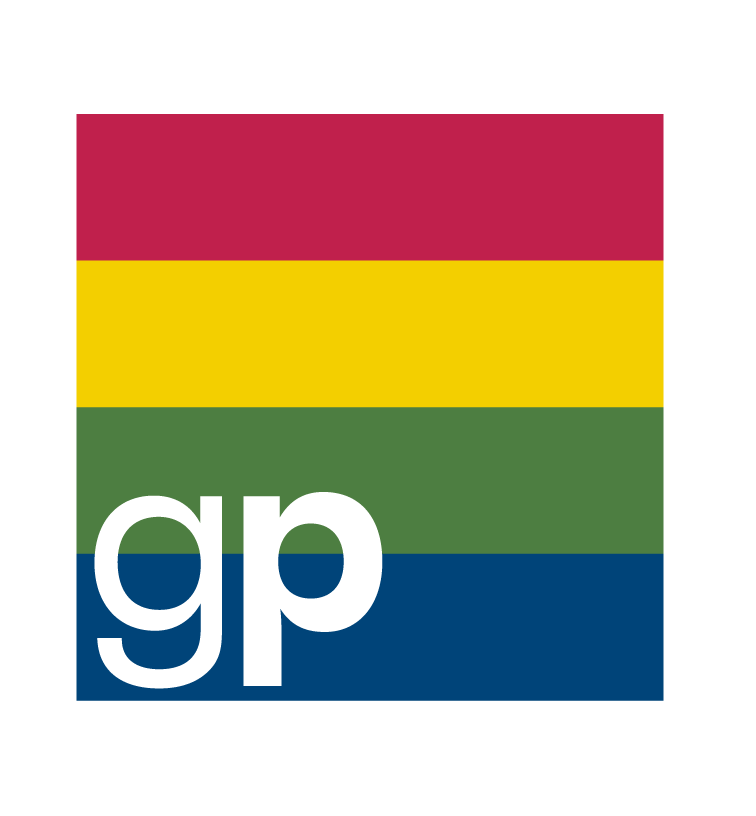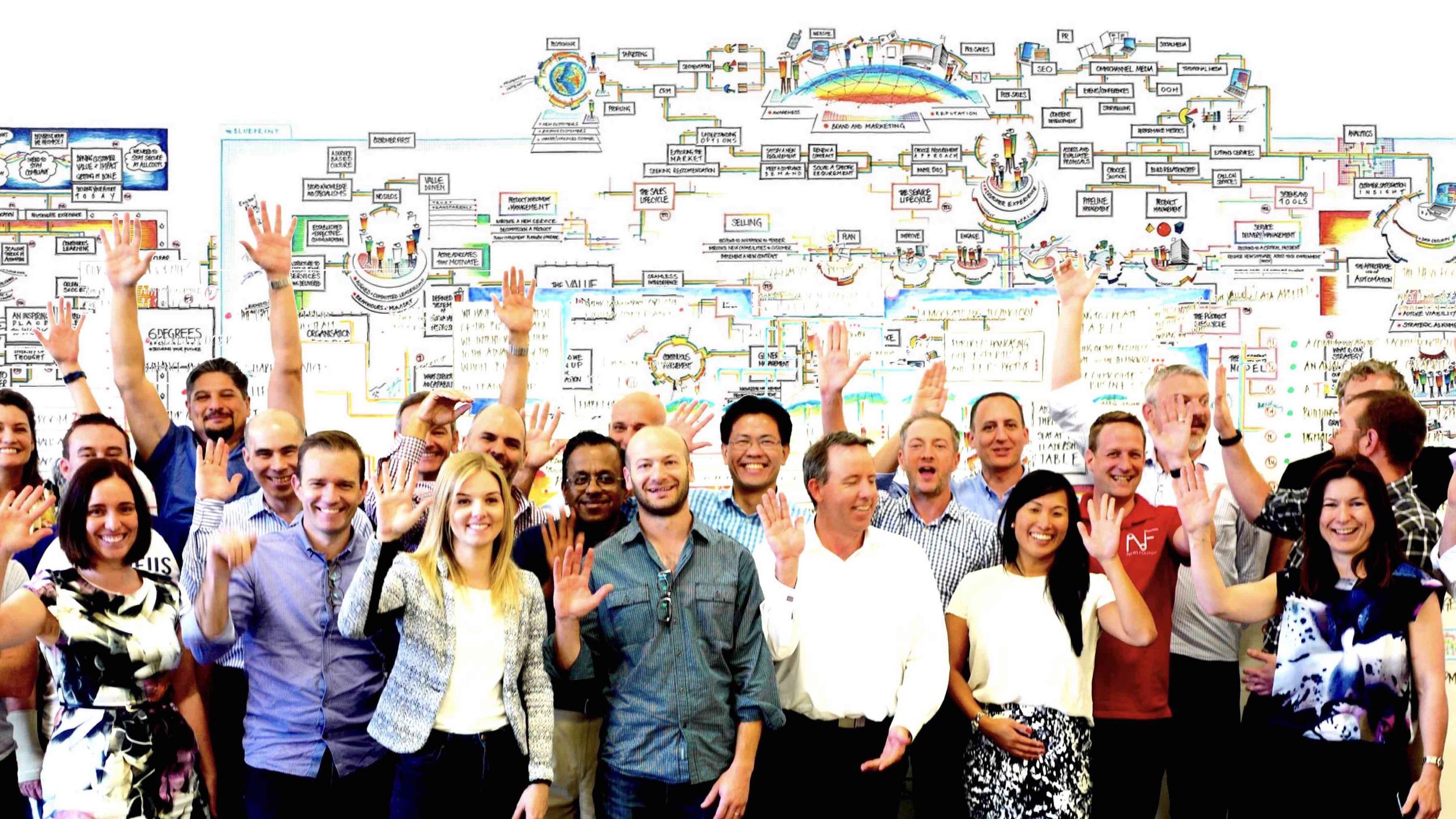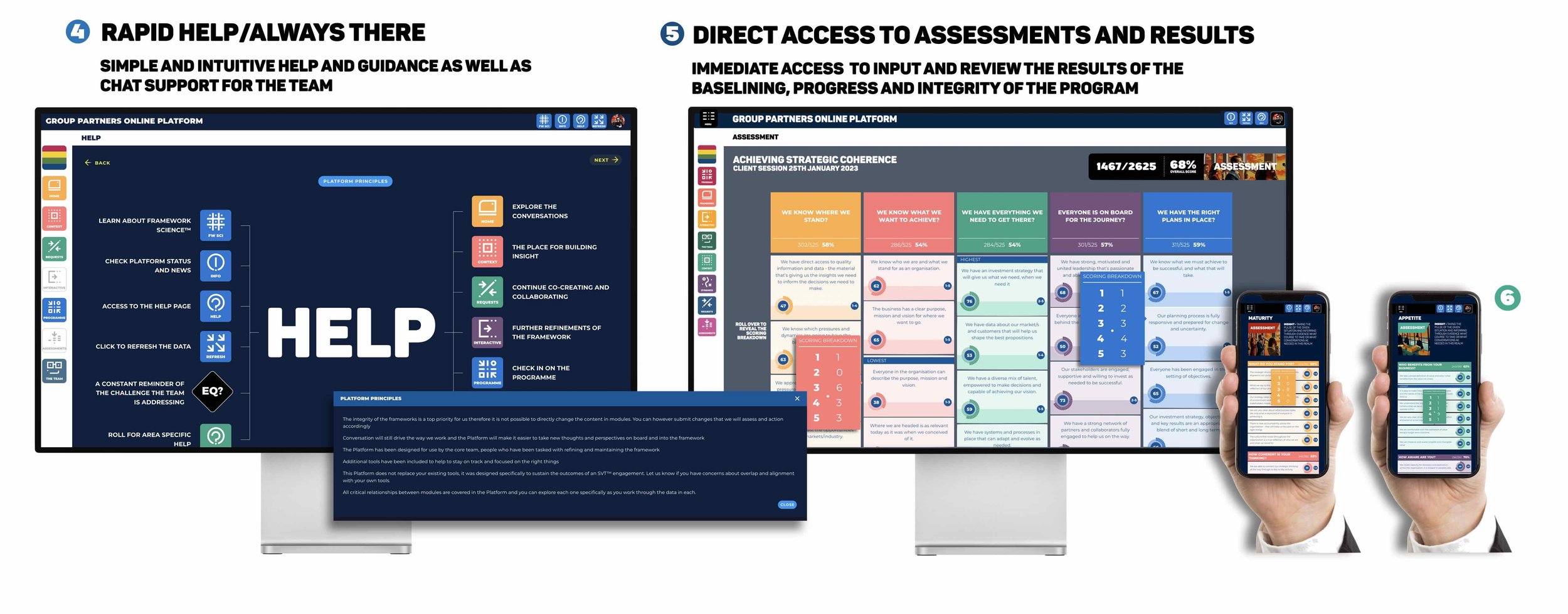
Discussion Document
Group Partners Proposed Approach to support STILE
Sustainability in the Textile and Leather Sector (STILE)
In Brief
The STILE project promotes sustainability in the Bangladeshi textile and leather sector through improved cooperation between the Government, companies and employees.
It provides training to factories, work inspection and environmental authorities, and national suppliers to ensure better compliance with social and environmental standards and address the impacts of the coronavirus pandemic.
This Document
This discussion document is a first attempt at laying down the bare bones of a response to the work needed. The document is in two parts.
A reprise of your brief to us.
How we will work alongside you and your team to deliver the requirements
We have added a series of generic images to explain our approach visually.
Designing our approach starts with the key elements of the brief we have been given - repeated below.
The Objective:
Collaborative learning using large-scale visualization on STILE project implementation and framework conditions in the Garment sector in Bangladesh
Imagery - Collaboration Between Group Partners and Midjourney In The Style Of Kamruzzaman Shadhin a visual artist born and based in Bangladesh
The Main Tasks:
Preparation and desk research – 1 day setting up in Dhaka, Bangladesh
Facilitation of a 3 Day Workshop with up to 25 STILE and Cluster colleagues in Dhaka, Bangladesh (plus 1 Day of Preparation at the venue in Dhaka, Bangladesh)
Big Scale Visualization (white walls) of content and strategic learning
2 Days Facilitation of Presentation and Discussion of Results in different settings:
with Governmental Stakeholders
with private sector Stakeholders
with other development partners
with academics (Shahidur, MT Hasan, etc.)
Documentation and Report
Imagery - Collaboration Between Group Partners and Midjourney In The Style Of Kamruzzaman Shadhin a visual artist born and based in Bangladesh
Strategic Objectives for GIZ/BMZ interventions:
Consolidating a successful Supply Chain for global brands and consumers?
Development of Bangladesh using a financially successful Supply Chain to trickle sidewise to other industries?
Strengthening the Textiles industry´s potential in Bangladesh> Downstream (recycling yarn, design, …) /upstream (logistics, /side (packaging/chemicals)?
Advancing sustainability, employment, decent workplaces – and RMG/Textiles as the core target
GROUP PARTNERS APPROACH
A Clear and Collaborative Method
Our approach embraces everything above and will deliver the spirit and intentions identified. Group Partners is a unique approach designed to ensure collaboration in context. It is therefore founded on the intelligent consolidation of existing information, gathering insight, broad perspectives and practical outcomes.
Generic Images To Illustrate The Scale And Distinction Of Our Approach
Additional Deliverables from Structured Visual Thinking™
What follows explains the other deliverables that will emerge as a direct by-product of a Structured Visual Thinking™ program.
Most programs are complex and multi-faceted.
Gathering and doing justice to existing knowledge provides critical context to any discussions.
Tools and Techniques for Efficient Execution
We use various tools and techniques to ensure the effectiveness and efficiency of programs. Extensive large-scale visualisation and facilitation, an experience for all the stakeholders, practical deliverables and tools at each step. Results that are widely shareable and useful in engagement and sustained communication.
Generic Images To Illustrate The Scale And Distinction Of Our Approach
Our Approach Is Conversational.
Facilitative, conversational, inclusive and immersive. Focused on insights, opportunities and challenges. Data-driven and evidence-based where possible and adding weight and structure to the frameworks. It’s action-oriented with clear outcomes. It’s practical and pragmatic.
The approach is visual, large scale and system-focused. Goal-orientated and logically structured. Educational and informative. Analytical and rational to enable decision-making.
The approach builds alignment, creates engagement and ownership, develops understanding and raises awareness. Stimulates ideas and challenges conceptions. Respects individual perspectives. Identifies clues, lessons learned and identification of insight.
Generic Images To Illustrate The Scale And Distinction Of Our Approach
A Phased Approach
We have broken down our proposed response into three main phases:
Context Development - This includes the stated Preparation and desk Research
Facilitated Discussions - Which includes the stated Big Scale Visualisation
Consolidation and Conclusions - Which consists of the stated Documentation and Report
The following programme reflects what we believe would deliver the best possible outcome. We may still need to adapt this. We encourage a 2-way dialogue to ensure we shape a program that will work within all required scenarios.
Generic Images To Illustrate The Scale And Distinction Of Our Approach
Phase 1 - Context Development
Everything we do is anchored and governed by ‘The Exam Question’ - a clear statement of the challenge/opportunity of the entire program.
We are starting to define the Exam Question right now. We have started with a hypothetical one below, and we will work with you to reach alignment on the final one before it is shared with invited attendees.
"How do we make the most of the knowledge and insights that we have amassed from our work to continue to collaborate, promote and enable better Environmental, Social, Safety, and Governance Standards in Textile Industries in Bangladesh?"
The Sub-Text:
Shine light on the issues throughout the influencing systems
Align all the stakeholders on the strategic goals for sustainability in this and adjacent sectors
Identify new opportunities to create a positive impact
We would start the work remotely in the UK well ahead of sessions in Dhaka.
We anticipate spending ~2-3 weeks working on all available information. Our assumption is based on material that we believe readily exists to position the GIZ program.
This information will provide highly relevant context - the challenge, opportunity, and other dynamics affecting this issue. We know this is a complex web of dynamics, and we want to spend time interpreting and shaping it meaningfully to bring a powerful and practical visualisation* into the room.
Generic Images To Illustrate The Scale And Distinction Of Our Approach
*This gives us a valuable backdrop to help with alignment, education and awareness.
We believe it would be highly appropriate to run questionnaires at this stage - to gather a broad range of perspectives, and we will happily discuss the value of this as we refine the program.
A key parallel activity alongside this is the framework design. These are the structures that we use for facilitated discussions. This framework will cover the topics we feel are most relevant to discuss as a group.
Phase 2 - Facilitated Discussions - Onsite in Dhaka
Ideally, we would be onsite with access to the venue that would be used three days before the workshop and be in this place through to the end. This allows us sufficient time to set up the space and build ‘live’ in situ to prepare the work we have completed in the previous phase. We will create an engaging environment that will encourage the right conversations.
Generic Images To Illustrate The Scale And Distinction Of Our Approach
We will work with you to develop materials for distribution beforehand and help set expectations for attendees.
The days in session will mostly involve the full group for each day, but we appreciate that there are different stakeholders involved, and for some, this may be more a case of presenting the outcomes.
We will work with you to plan the days and the best way of running them. It may be that we will need local print facilities or, ideally, large screens and technically capable rooms to bring the frameworks and conversations to life.
Generic Images To Illustrate The Scale And Distinction Of Our Approach
Phase 3 - Consolidation and Conclusion
Before we leave Dhaka, we will agree on principles for the outputs - what is needed and in what format. In a standard engagement, we include, as a minimum, all visuals developed through the programme and a full narrative of the discussions related to the framework.
Possible Options
Other deliverables may be required, which we cannot anticipate at this stage, so they will be subject to further discussion and potentially incur additional budget. Examples of this might be:
More formal/sophisticated digitalised visuals that can be used in different formats for presentation
Other visuals that provide a toolkit for taking this work out (independently of Group Partners if appropriate)
The Group Partners Online Platform™ - An online collaborative platform that allows teams to continue developing relationships with the frameworks we build together and the content and narrative created. This platform has wider features like ongoing integrity assessments and other applications, functions and value.
Generic Images To Illustrate The Scale And Distinction Of Our Approach
Commercial Options
When we speak, we can discuss the options on costs. Such assignments vary a bit based on the extent and scope of each phase, as shown above. We will also explain the possible benefits of the online platform. It’s an option.
Generic Images To Illustrate The Scale And Distinction Of Our Approach














